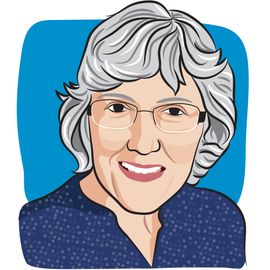- About Us
- Advertise / Support
- Editorial Board
- Contact Us
- CancerNetwork.com
- TargetedOnc.com
- OncLive.com
- OncNursingNews.com
- Terms & Conditions
- Privacy
- Do Not Sell My Information
- Washington My Health My Data
© 2025 MJH Life Sciences™ and CURE - Oncology & Cancer News for Patients & Caregivers. All rights reserved.
Exercising to Your Own Beat: Cancer and a Disability

Kelly Irvin is a multi-published novelist and former newspaper reporter who worked in public relations for more than 20 years. She retired from her day job in 2016 after being diagnosed with primary lateral sclerosis, a degenerative motor neuron disease, and stage 4 ovarian cancer. She spends her days writing and loving her family.
Editor’s Note: This piece was submitted by a contributing writer and does not represent the views of CURE Media Group.
Health professionals, researchers and cancer survivors will tell you the best medicine for a newly diagnosed cancer patient is to keep active, to do the things you’ve always wanted to do and to live your dreams without delay. I’ve seen dozens of human interest articles spotlighting cancer survivors who decided to learn to water ski, hike the Appalachians, run marathons or teach yoga and tai chi classes. They shake off chemo brain and fatigue with regular doses of exercise and adventure.
I’m happy for them. I think, “Way to go.” “You go, girl.” “Way to hang tough, guy.”
And then I skim through the articles, looking for the advice for those of us who are unable to participate in these physical endeavors. I’m still waiting for the articles directed at those of us who have physical disabilities that prevent us from engaging in that particular activity to reduce stress and the side effects of a cancer diagnosis and treatment. I haven’t seen a single article dealing with this subject in the year and a half since my diagnosis, so I decided to take a stab at it myself.
I’m no health care expert, but I’m one of thousands of people who have double diagnoses. Cancer plus one, whether it’s a degenerative neurological disease or paralysis due to an accident or multiple sclerosis or any one of the many other debilitating diseases. I was diagnosed with primary lateral sclerosis (PLS) one month before my stage 4 ovarian cancer diagnosis. My range of motion is severely limited. I recently graduated from a cane to a walker. A once active seven-day-a-week queen of aerobics, I now struggle to walk to the mailbox. How do the cancer ninjas in my boat reap the benefits of exercise that include reducing stress, keeping extra weight off or losing weight, maintaining muscle mass and fighting off the side effects of chemo such as fatigue and hypertension?
Those of us with physical disabilities must seek out and find what works for us. We must ask the questions. We can’t indulge in a pity party because health care professionals are busy managing our cancer treatment and often don’t talk to us about diet, nutrition and exercise. First, I remind myself every time I see an article from a healthcare expert or a cancer survivor who says, “Take a long walk” or “Learn yoga” or “Enroll in tai chi” or “Swim three times a week” that my cancer won’t worsen because I can’t engage in those activities. Feeling bitter at the unintended salt in my wounds doesn’t help.
The focus must be on what we can do. I can sit on the stationary bike and peddle for fifteen minutes. I can hang on to the treadmill handles and walk for five minutes at two miles an hour. I can lie on the floor and stretch my leg muscles in range of motion and do strengthening exercises provided by a physical therapist. I can sit in a chair and do arm range of motion exercises. The important thing is to talk to your health care provider about what you can do and what will provide the most benefit. Ask your oncologist to refer you to a physical therapist. Talk to a dietician or nutritionist.
Just as importantly, we can exercise our joy muscles. I can rent an electric cart at the zoo and enjoy the exhibits with my grandchildren. I can enjoy the sunshine on my face and the cool spring breeze. I can savor the sound of my grandbabies’ laughter and their babble. It’s good for my blood pressure and for my stress. I can fill up that cold canyon of fear that grew in my heart the day I received my stage 4 diagnosis with warm memories of ducks quacking at our feet to the delight of a two year old and a three year old.
Find the activities that make you smile. Do them regularly. We can also find the spiritual exercise that calms our souls. For me, that means I can exercise my faith muscle—the one that offers me hope because I’m reminded that someday I’ll shed my scarred, limping body and dance the two-step with my heavenly Father. That muscle goes arm-in-arm with the empathy muscle. I exercise it when I pray for others who are paralyzed and receive cancer treatment in their wheelchairs. I need only look left or right to see others who exercise their courage muscles every day. Exercise comes in many forms. We don’t have to scale Mt. Everest or finish a triathlon to reap its benefits. We simply must get in the game—our game.
Related Content:



